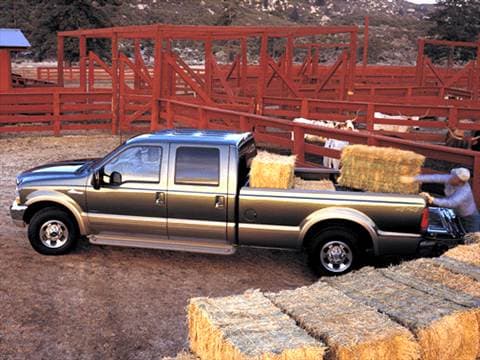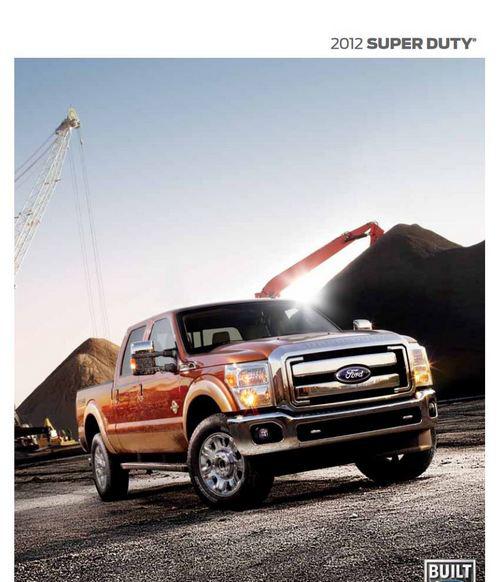2017 F250 V10 Triton Manual
Posted By admin On 07.09.19
If you are searching for the ebook Ford f 350 2017 triton v10 manual in pdf form, then you've come to faithful site. We furnish utter variation of this ebook in PDF, ePub, doc. HAYNES 36060 Ford Super Duty F-250/350 Pick-ups & Excursion, '99-'10 Info. CHILTON 26667 Total Car Care Manual - Ford Super Duty Pick-ups.
It looks as though for 2017, Ford is going to be bringing back the 6.8-liter Triton V10. There has been a lot of advertisement through the media on the matter and it seems everyone thought the V10 no longer existed. To everyone’s surprise, the V10 actually never stopped production. Many thought that when Ford quit offering the engine as an option for the 2011 Superduty that the Triton was no longer available. However, the V10 has been offered as an option for the F450-F750 cab and chassis along with motorhome chassis since 2012. With the introduction of the 6.2-liter V8, the V10 was dropped from the Superduty line. The V10 has been an option for the Ford truck chassis since 1997.
2017 F250 V10 Triton Manual Power
With the elimination of the 385 series 460 cubic inch big block, Ford offered the V10 as a diesel alternative. The V10 is a part of Ford’s modular family, and is actually identical to the 5.4-liter SOHC with a 3.552˝ bore and 4.165˝ stroke with the addition of two cylinders. The two-valve version, which produced 310 horsepower and 425 ft.-lbs.
Of torque, was offered from 1997 through 2004 models. The three-valve version was offered from model year 2005 through present vehicles with 360 horsepower and 457 ft.-lbs. The crankshaft is unique with a split pin for 72° firing intervals with a firing order of 1-6-5-10-2-7-3-8-4-9 and a balance shaft placed in the driver’s side cylinder head to help in dampening vibrations. The V10 has offered great service and reliability with a life expectancy of 300,000 miles plus. These engines are reasonable to rebuild with a variety of aftermarket parts available for them.
This is a great opportunity to examine the components that make up the biggest modular engine along with the changes the engine underwent during production. One thing to keep in mind would be the initials “PI” cast into the cylinder heads. These initials stand for “Performance Improvement.” Early versions of this engine from 1997 until 1999 were considered “Non-PI.” The “PI” versions started in 2000, and incorporated changes to the cylinder head and intake manifold, which resulted in significant power gains for the engine. The intake manifold and cylinder heads of “PI” will not interchange with “Non-PI” due to differences in port design.

Below is a list of changes of the engine components in relation to the casting number. Many engine remanufacturers refer to the casting number for proper fitment of engine parts. The actual part number of each component is difficult to trace because many of the component part numbers were superseded many times during production. Cylinder Heads Casting Number: F7VE – produced from 1997 until 1999 and known as “Non-PI” version. Has rounded intake ports with an open style combustion chamber with one intake valve and one exhaust valve.
YC2E – produced from 2000 until 2001 and known as “PI” version. Has somewhat of a square shaped intake port with more of a closed style combustion chamber which offered a small compression ratio change.

Also has one intake valve and one exhaust valve. 1C2E – produced from 2002 until 2004 and known as “PI” version. Same head as the YC2E with differences being to the spark plug threads. These heads had revisions to the spark plug threads because Ford had issues with the Modular engines (meaning the 4.6 liter and 5.4 liter) prior to this that would blow the spark plugs out. The problem was that there were not enough threads holding the spark plugs in the cylinder heads. Over a period of time the spark plugs would work loose and then blow out, stripping the threads from the cylinder head. There is a service tool and procedure for the prior cylinder heads which will ream the stripped spark plug hole to allow for a new threaded insert for the spark plug.
The 1C2E cylinder head is often referred to as “LP,” meaning long plug. 5C3E – produced from 2005 until 2007, this was the introduction of the three-valve version. This head had two intake valves and one exhaust valve. The spark plugs changed to a different design for the three-valve combustion chamber. The intake ports are an oval shape for the split port design of the two intake valves.
F250 V10 Reviews
9C3E – produced from 2008 until present and are very similar to the 5C3E except for a smaller combustion chamber which resulted in a small compression change. From 1997 until 2005 the two-valve version cylinder heads used a spark plug with a 14mm thread, an 18 mm reach, and a 5/8˝ hex.
The valve diameters were 44.5 mm intake valve and a 36 mm exhaust valve. From 2005 until present the three valve version cylinder heads used a spark plug with a 12mm thread, 26.5 mm reach, and a 9/16˝ hex. The valve diameters were 34 mm for the two intake valves and 37.5 mm for the one exhaust vale. Note – Head bolts are torque-to-yield (TTY) meaning a one-time use. The two-valve and three-valve versions require different part numbers for replacement head bolts. Engine Blocks Casting Numbers: F7UE – available from 1997 until 2001, was produced for “Non-PI” engines 1C3E – in production from 2001 until 2003, was produced for “PI”,cylinder heads and had knock sensor bosses in the engine valley. Keep in mind that you may find that some blocks will have the knock sensor bosses machined and some will not be machined.
2017 F250 V10 Triton Manual Pool
3C3E – production from 2003 until 2005, was produced for the “PI” cylinder heads and should have machined knock sensor bosses in the valley of the engine. 5C3E – production from 2005 until present, was produced for the use with the three-valve version cylinder heads and intake. Very similar to the 1C3E and 3C3E engine blocks. The 5C3E (latest version) block will work for a replacement of all previous production blocks as long as it is used with “PI” cylinder heads.
The “PI” cylinder heads used a “PI” intake which has a shallow plenum versus the “Non-PI” intakes which had a deeper plenum. The “Non-PI” heads cannot be used with latest version block because the deep plenum of the intake will hit the knock sensor bosses in the valley of the engine.
Note – There are various types of intakes for these engines based on their applications. Some intakes were aluminum and some were plastic. There are differences in designs used between truck and van applications. The important thing to remember is there is not only a difference in port designs for “Non-PI,” “PI” and three-valve but also the depth of the plenum. Crankshaft F7UE – production from 1997 until present.
The crankshaft is a 4.165˝ stroke with a 72° split pin rod journal meaning that each rod journal is offset to fire at 72° intervals. Because of the split pin design the crankshaft is performance limited. Pistons Pistons were the same design for Non-PI and PI two-valve per cylinder versions. There was a design change for the three-valve per cylinder version, which was the same from 2005 until present. Connecting Rods The connecting rods were the same material and length for all production years.
The connecting rod material is a sintered powder metal with floating wrist pins and 6.658˝ long. This length of connecting rod with a 4.165˝ stroke crankshaft yielded a nice 1.60:1 rod to stroke ratio. Chains and Tensioners The timing chains and tensioners were the same for all years of production.
Camshafts and Balance Shaft Non–PI engines produced from 1997 until 1999 take a different camshaft from the PI versions produced from 2000 until 2005. The three valve per cylinder versions produced from 2005 until present also required a different camshaft. Keep in mind that when purchasing a new camshaft identify which version you have and remember that there is separate part numbers for the left bank and right bank camshaft. Balance Shaft – Two different versions. F7UE – two-valve per cylinder version produced from 1997 until 2005. Fits Non-PI and PI engines 5C3E – three-valve per cylinder version produced from 2005 until present, also sprocket is different than that of a two-valve version.
Front Engine Cover F75 and F85 – produced 1997 until 2000 F85 – produced for 2001 only 2L3E – produced for engines in 2002, 2003, 2004 2L3E – produced in 2005 for E-Series Vans 5C3E – produced for 2005 until present engines The timing covers are different for different applications. Make sure investigating the engine or getting a new timing cover that you know which timing cover you have. The major change in the timing cover was the placement of the idler pulleys. Harmonic Damper F7UE, XC2E, YC2E – produced from 1997 until 2001 2L3E, 5C3E, 7C3E – produced from 2002 until present The difference of the harmonic dampers will be thickness and the number of belt grooves for your application.
Oil Pump The same gerotor-style pump used for all years of production. In June of 1996, Ford manufactured the first Triton 6.8-liter V10 at the Windsor Engine Plant. The Triton V10 was added to the same production line as the 4.6 and 5.4-liter engine because they all could be built on the same production line.
The Windsor Engine Plant supplies engines to the Ford Truck assembly plants in Norfolk, VA and Kansas City, MI. Later the Windsor Engine Plant also supplied engines to the Lorain, OH, Oakville, Ontario, and Wayne, MI plants. By the end of 1997, the Windsor Engine plant produced over 650,000 engines and had created 500 more jobs. Cylinder heads for all three modular engines are supplied by Essex Aluminum plant in Windsor.